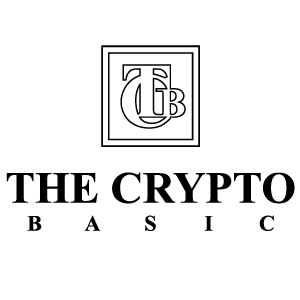EU Stablecoin Interchangeability Under MiCA—What’s Next?
4 min read
The European Commission is preparing to issue new guidance clarifying how stablecoins are treated under the EU’s crypto regulation framework, known as MiCA. The update is expected in the coming days, as pressure builds for clearer rules on cross-border stablecoin use. At the core of the guidance is a rule that would allow stablecoins issued by the same company to be treated as interchangeable, regardless of whether the tokens were minted inside or outside the EU. This would apply only if the issuing company holds a license to operate under MiCA within the EU. Commission Prepares Stablecoin Clarification After Ethena Exit Highlights Gaps According to a report from Reuters, the commission intends to formally clarify this in response to mounting industry uncertainty. One specific issue has been the lack of clarity around whether tokens issued in different jurisdictions by the same company can be used interchangeably, also referred to as “fungibility.” According to Reuters, the European Commission will issue guidance clarifying that stablecoins issued by EU-licensed entities can be treated as interchangeable with those issued by their non-EU affiliates, under the MiCA framework. The move responds to a query from French… — Wu Blockchain (@WuBlockchain) June 25, 2025 The guidance comes as the European crypto sector adjusts to MiCA, which came into effect in December 2024. Under the law , stablecoins classified as e-money tokens (EMTs) must be backed by reserves held mostly in EU-based banks and issued only by licensed firms. The Commission’s position follows a March incident involving Ethena, a stablecoin issuer that was denied a MiCA license in Germany and subsequently exited the EU market. The Commission is now expected to confirm that such companies could treat their tokens as fungible across jurisdictions, as long as the EU-licensed entity is involved. Not everyone agrees with the approach. The European Central Bank has voiced concern, warning that allowing this type of interchangeability could create stress in the EU’s financial system. The ECB argued that EU-held reserves could be used to meet redemption requests from non-EU holders, a scenario that could “risk undermining EU strategic autonomy.” Despite that, a European Commission spokesperson said the risks of such a scenario were low. “A run on a well-governed and fully collateralized stablecoin is very unlikely,” the spokesperson said. The Commission also said that non-EU holders of such jointly issued stablecoins would have to direct their redemption requests to the non-EU entity that issued the token. To prevent mismatches between reserves and redemptions, the Commission plans to require stablecoin issuers to introduce re-balancing mechanisms. These would ensure that the reserves held in the EU match the amount of tokens circulating within the region. This clarification follows a request from France’s banking regulator in April, which asked the Commission whether identical tokens issued by separate arms of the same company, one licensed in the EU and the other abroad, could be treated as fungible. The ECB remains cautious. In internal communications, the central bank warned that shared reserves could be drained under financial stress. It also emphasized that redemption flows should be kept separate to avoid regulatory loopholes. Still, the Commission maintains that clear separation between EU and non-EU redemption channels, combined with robust reserve tracking, will reduce risk. A formal statement from the Commission is expected soon, as regulators seek to strike a balance between market innovation and financial safeguards under MiCA. MiCA Faces Early Resistance as Europe Weighs Stablecoin Future and Pushes Digital Euro As the EU rolls out its comprehensive MiCA framework, early responses to its stablecoin rules suggest a rocky start. While MiCA has provided clarity for crypto firms operating in Europe, its strict conditions, like requiring issuers to hold reserves in European banks and banning interest on tokens, have slowed stablecoin adoption. Tether, the world’s most-used stablecoin, has already opted out , while Circle, Crypto.com, and a handful of others have gained approval under the framework. However, adoption remains sluggish. Fabio Panetta, former ECB board member and now Governor of the Bank of Italy, noted that MiCA has not triggered any notable wave of stablecoin activity in Italy, one of the EU’s largest markets. On Friday, the Bank of Italy warned that growing crypto ties to traditional finance risk financial stability. #Italy #Cypto https://t.co/BZyYWt8f14 — Cryptonews.com (@cryptonews) May 30, 2025 Instead, user interest is gravitating toward custodial and trading services rather than issuance. Panetta stressed that while MiCA improves transparency and oversight, regulation alone won’t neutralize systemic risks. He argued for accelerating the digital euro project, which could provide a more secure and central-bank-backed alternative to private stablecoins. At the same time, other major jurisdictions like the U.S. are racing to finalize their own stablecoin laws , adding urgency to Europe’s efforts to lead on global crypto standards. The stablecoin race is far from settled, and MiCA’s impact is still being tested. The post EU Stablecoin Interchangeability Under MiCA—What’s Next? appeared first on Cryptonews .

Source: cryptonews



